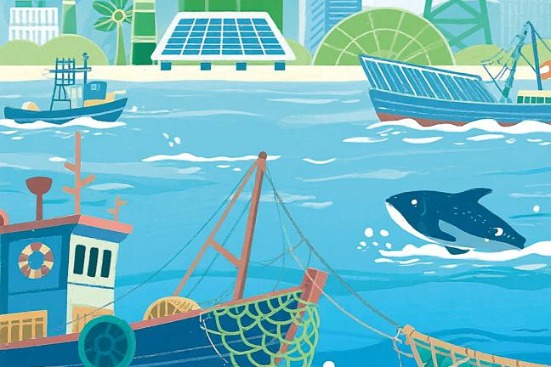Law of nature
Threat to biodiversity from pollution calls for strengthening legislation on the use of toxic and hazardous chemicals


Threat to biodiversity from pollution calls for strengthening legislation on the use of toxic and hazardous chemicals
The rate of global biodiversity loss has been accelerating since the beginning of the Anthropocene Epoch, especially after the Industrial Revolution. The fifth Global Biodiversity Outlook report indicates that the world has only partially achieved six of the 20 Aichi Targets (Global Biodiversity Goals 201120), and the continued loss of biodiversity poses a significant risk to human survival and development.
In this context, the first phase of the 15th UN Biodiversity Conference of the Parties (COP 15) was held in October 2021 in Kunming, Yunnan province. President Xi Jinping attended the Leaders' Summit via video link and delivered a keynote speech. The second phase of the COP 15 will be held in Montreal, Canada, in December, and China will continue to lead the substantive and political affairs of the conference as the chair.
Currently, environmental pollution is widely recognized by the international community as one of the drivers of biodiversity loss, and the production and use of toxic and hazardous chemicals are the main sources of various environmental pollutants. Traditional chemical pollutants such as pesticides and fertilizers, and new chemical pollutants such as persistent organic pollutants, endocrine disruptors, antibiotics, and microplastics, not only directly affect species and community structure but also accumulate in the ecosystem through the cycle of contaminated habitats, thus having a profound impact on biodiversity.
According to a conservative estimate, there are approximately 350,000 different types of man-made chemicals in the global market, and the rate of production and release of new chemicals is far out-pacing human risk assessment capabilities, posing a rising threat to global biodiversity. According to the United Nations, global chemical production capacity was 2.3 billion tons in 2017 and it is expected to double by 2030. In view of that, strengthening the management of chemicals has become one of the vital initiatives for international biodiversity conservation.
On the one hand, China is one of the countries with the richest biodiversity in the world. According to the Chinese Biological Species List, the number of species in China exceeds 125,000. On the other hand, as a major global producer, user, importer, exporter and consumer of chemicals, China's chemical market is still expanding, with chemical sales reaching 36.83 million metric tons in 2020, up 4.84 percent year-on-year. Given this, in order to avoid the risk of biodiversity loss caused by chemical pollution, it is necessary to consider chemical management and biodiversity in an integrated manner. In particular, we should focus on the role of the rule of law as a safeguard, and can also draw on international experience to promote the collaborative governance of biodiversity conservation and chemical management in China by strengthening coordination legislation.
To be more specific, at the national legislative level, we should strengthen the safety management of chemical production, use and circulation, and build a whole cycle of chemical risk prevention and control mechanism based on the Chemical Management List. Meanwhile, we can promote the articulation of laws on chemical management and the conservation of biodiversity, and set up articles on the articulation of chemical management and biodiversity protection in the natural ecological protection chapter of the forthcoming environmental code.
At the regional legislative level, China's regional legislative collaboration has flourished in the field of ecological environmental protection in a practice-first manner and has been confirmed by the newly revised Organic Law of the Local People's Congresses at All Levels and the Local People's Governments at All Levels of the People's Republic of China in 2022. On the foundation of these rich practical experiences and legal basis, key regions, such as the Beijing-Tianjin-Hebei region, the Yangtze River Basin, the Yellow River Basin, and the Guangdong-Hong Kong-Macao Great Bay Area, can be encouraged to carry out collaborative legislation on regional biodiversity conservation and chemical management, taking into account the requirements of ecological redlines and new pollutant management, as well as the experience of collaborative ecological environment protection.
In terms of law implementation, attention should be paid to the administrative enforcement synergy between different authorities of biodiversity protection and chemical management, and the fluent articulation between relevant administrative law enforcement and environmental justice, so as to promote "the law on paper into the law in action". In terms of coordinated administrative enforcement, since chemicals management involves multiple authorities, it is necessary to first promote the coordination of enforcement within chemical management, and then, promote the synergy between the coordinated chemical enforcement system with biodiversity enforcement. Meanwhile, for the biodiversity damage caused by chemical pollution that cannot be solved through administrative enforcement, public interest litigation should be filed promptly to play the role of judicial protection.
The author is the director and a Ph. D. supervisor of the Environmental Safety Research Center at the Beijing University of Chemical Technology. The author contributed this article to China Watch, a think tank powered by China Daily. The views do not necessarily reflect those of China Daily.
Contact the editor at editor@chinawatch.cn



































